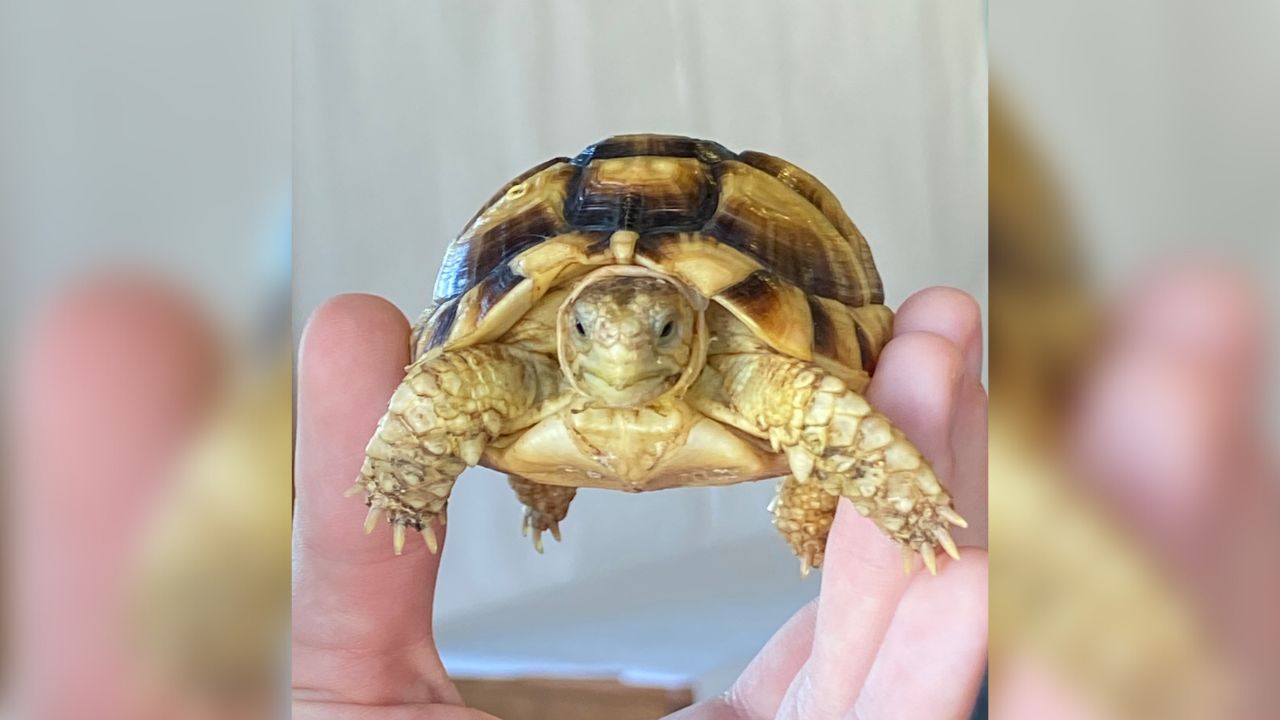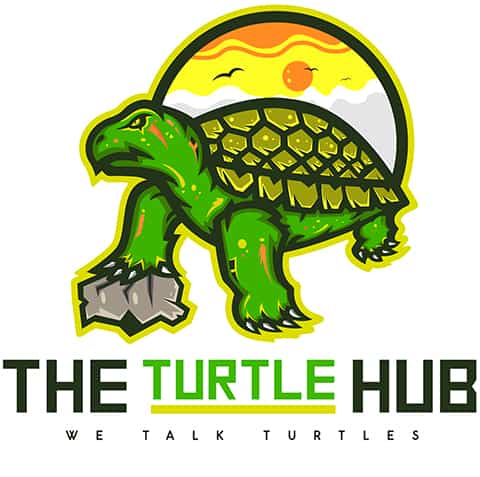Tags:
Pyramiding In Tortoise: Causes, Prevention, Treatment


fact checked & review by
Dr. Partho Kumar Shaha
Veterinarian (DVM)
The information is current and up-to-date in accordance with the latest veterinarian research.
While keepers treat pyramiding as a harmless disease, it can actually turn into a life-threatening condition. Tortoises suffering from this bumpy shell growth are at risk of paralysis and lung damage. Hence, getting into the causes, prevention, and treatment will give the owners a clear idea of this disease.
Pyramiding in tortoise:
| Causes | Prevention & Treatment |
|---|---|
| 1. Overfeeding 2. Improper diet 3. Low humidity 4. Low temperature 5. Dehydration 6. Lack of sunlight 7. Inactivity 8. Congested space | 1. A balanced diet 2. Strict diet schedule 3. Regular soak 4. Substrate misting 5. Encourage the tortoise to walk 6. Install UV and heating bulb |
Read the article to the end for a detailed note on pyramiding.
Introduction To Pyramiding & Differences With A Healthy Shell
Pyramiding is a metabolic bone disease that leads to abnormal growth of the scutes. In this condition, the scutes on the carapace rise and take the shape of a pyramid. Hence, the name pyramiding comes. It is also known as pyramidal growth syndrome or PGS.
Well, pyramiding is an unhealthy condition. But apparently, the leopard tortoises have a carapace growth that resembles a closer look to pyramiding.
Therefore, you need to know the ideal shell appearance for your pet tortoise first. Only then can you differentiate between the healthy and pyramiding shells.
Do you know tortoises shed upper shell layers as they grow? It is considered healthy and a sign that your pets are developing with age. Each of the scutes on the shell undergoes individual shedding.
During the normal growth cycle, the scutes grow horizontally. Therefore, the overall dimension of the tortoise shell increases. Moreover, the scutes have a smooth surface, accommodating growth rings.
Now, if the scutes start growing in a vertical direction, you need to be alert. This is not a healthy sign at all. There is a high chance that the tortoise has developed pyramiding.
You will barely notice any wild tortoise with pyramiding syndrome. But tortoises in captivity often suffer from this disease due to improper diet.
Pyramiding is curable, and you need to act immediately. The disease causes irregularities in the lifestyle of the tortoises. The upcoming sections will enlighten us more about this condition.
Tortoise Pyramiding Symptoms
The symptom of pyramiding is very prominent in tortoises. For example, you can easily spot the vertical scute growth in the creatures.
Pets with pyramiding may also suffer from other diseases as a consequence. For example, respiratory tract issues, limping, paralysis, trouble laying eggs, etc.
Take the tortoise to a vet for a proper diagnosis.
What Leads To Pyramiding In Tortoises?
Tortoises do not develop shell pyramiding all by themselves. Instead, environmental and dietary factors push them toward this disease. The common causes of pyramiding in tortoises are,
1. Low Moisture Percentage In The Habitat
While a highly humid enclosure leads to a bacterial outbreak, a low moisture content causes dry-out. The tortoises living in a low-humid pen will suffer from dehydration.
Reports claim that dehydration in tortoises weakens their immunity system. As a result, pets become more vulnerable to diseases, especially pyramiding.
The only way to bounce back from pyramiding due to low humidity is to rehydrate the tortoise. You can replenish the tortoise’s system with the following tricks,
- Spray water on the substrate to trap moisture
- Install a humidifier
- Soak the tortoise regularly
- Create a humidity chamber for the tortoise
- Offer the pet fresh water every day for drinking purposes
- Add water-rich vegetables and greens to the meals

2. A Lazy Tortoise
Tortoises need to exercise regularly.
No kidding!
The lack of exercise will weaken the posture of the tortoise. It causes the deterioration of bones and abnormalities of shell growth. Besides, the pet will suffer from obesity.
Of course, you spot no obese tortoise in the wild. It is because the creatures roam around and search for their meals.
However, in captivity, the owners prevent their pets from walking or moving. Allowing the tortoises to graze in the open field and buying them exercise toys will help the pets to get into shape.
3. There Is Not Enough Space
The newbies often compromise the tortoise’s health by placing it in a congested enclosure. Let me remind you again. A tortoise will not thrive in a small pen and suffer from diseases continuously.
Apart from the mental stress, the narrow space hampers the physical growth of the tortoise. The congested area does not allow the pet to walk or move. Therefore, the creature develops weak muscles and bones, which consequently turn into abnormalities.
In short, it is not surprising that a tortoise living in a small habitat suffers from pyramiding. Ensuring the pet has enough space to move is the way out of this condition.
4. Consider The Diet Imbalance
The most common reason behind tortoise pyramiding is a messed up diet plan. An ideal tortoise meal should include high fiber, high water content, low protein, and low calories. Besides, the items must have a proper phosphorus-calcium balance.
Thus, the meal with high protein or high phosphorus – low calcium causes pyramiding in tortoises. Moreover, overfeeding pets is another cause of this disease.
But luckily, controlling the diet chart and feeding schedule can cure the tortoise.
5. The Pet Is Dehydrated
Apparently, dehydration can also be a cause of the pyramiding in tortoises. The lack of water in the tortoise system messes up the metabolism, which causes digestive issues. As a consequence, this creature can not absorb the nutrients properly.
Without the necessary vitamins and minerals, shell growth gets hampered. Therefore, you notice the tortoise developing scutes in the vertical direction.
Feeding the tortoise water-rich vegetables and providing a water bowl in the pen are excellent ways of rehydrating the pets. Also, soak the tortoises in lukewarm water to replenish their system fast.
6. What About The UV Lamp?
Vitamin D3 and calcium are mandatory nutrients to promote healthy shell and bone growth for tortoises. Unfortunately, the natural diet items can not match the required percentage. As a result, experts suggest adding supplements to the meals.
Besides all these arrangements, installing a UV lamp is also recommended. The UVB rays influence vitamin D3 production in the tortoise body naturally. As a result, the pet can absorb the calcium from food and supplements efficiently.
Hence, lacking UV light leads to pyramiding and abnormal shell growth in the tortoises.
Exposing the tortoise to direct sunlight can prevent pyramiding. It is because the sun is the ultimate source of UV rays.
How To Prevent And Treat Pyramiding In Tortoises?
Pyramiding can lead to early death in tortoises by creating health complexities. Hence, immediate action is mandatory to cure the tortoise. However, prevention is always preferable to the treatment process.
Luckily, the curing and prevention processes of pyramiding are the same in tortoises. Such as,
1. Select The Right Diet
Tortoises need a high fiber, low protein, and low carb diet. Considering the nutrient requirements and food habits, you can tag tortoises as herbivorous. The species basically live on grass, hays, weeds, vegetables, plants, leaves, etc.
The safe food options for tortoises are,
- Aloe vera
- Cactus pad
- Alfalfa hay
- Bermuda grass
- Ryegrass
- Timothy hay
- Marrygold leaf
- Kale
- Escarole
- Carrot
- Cucumber
- Pumpkin
- Malva
- Nettles
- Water hyacinth
- Chickweed
- Pansy
- Sprout
- Red clover
- Cabbage
- Watercress
- Dandelion, etc.
N.B. The food must be low in oxalate. The phosphorus-calcium ratio should be 1:3.
You will find the whole food list for tortoises in this article. You can buy fresh, pesticide-free grass and vegetables for tortoises from the local stores.
However, planning a home tortoise garden allows you to cut down the expense. On top of that, growing a tortoise garden is really easy. This article has revealed how I grow grass and plants for my pets.

2. Supplement The Meals
Calcium deficiency can also lead to pyramiding and other shell conditions. One of the best ways to deal with such diseases is to eat calcium and vitamin D-rich food.
Unfortunately, organic meals are not enough to back up the mineral deficiency. Therefore, supplements are necessary for tortoises.
You can sprinkle calcium and vitamin D supplements on each meal. Also, you can add a multivitamin to combat the overall mineral shortage.
3. Follow A Strict Diet Schedule
As mentioned, overfeeding is another reason for pyramiding. Hence, following the ideal diet schedule will minimize the risk of overfeeding.
Usually, baby tortoises require food every day as they grow. On the other hand, a 5-day-a-week feeding routine is best for juveniles and adults. However, the old and senior tortoises may eat even less.
As for the quantity, meals 5% of the total body weight of the tortoise are considered healthy. The food should contain 60 – 80% of greens. You can fill the rest with commercial items and fruits.
4. FIght The Dehydration And Low Humidity
Of course, the dry environment and dehydrated system also push the tortoises towards pyramiding. So, you need to find each and every way to keep the tortoise hydrated and the pen humid.
Usually, the humidity percentage in the enclosure varies from tortoise to tortoise. On average, tortoises require humidity of 60 – 70%. You can track the moisture percentage of the habitat by investing in a hygrometer.
Let’s explore the ways to maintain humidity in the enclosure. The tricks will also work on keeping the tortoise hydrated.
Spray The Substrate
Lightly spray the substrate and pen wall every day. The substrate will soak the water and keep the moisture level safe.
Buy A Humidifier
Investing in a humidifier is an excellent idea to maintain the humidity percentage. Though the device is expensive, it will eliminate the dehydration risk.
One more thing. When selecting the substrate, make sure its moisture retention performance is up to the mark. Otherwise, misting the bottom will be of no good.
I have the top 5 substrate options sorted for you here.
Why Not A Humid Container?
There are commercial and automatic humidity boxes available for tortoises. However, those can be a little bit expensive. Hence, DIY one humid box at home.
For example, you use a clay pot to make a hide. Craft an opening and decorate the inside with moss and moisture retainer substrate. Install a reptile fogger inside or attach a sponge on the top of the pot.
There you go! The humid box for your tortoise is ready.
Soak The Pet
Soaking is the best way to keep the tortoise hydrated. While the baby tortoises require a bath every day, the adults are okay with 2 – 3 soaks a week. Use lukewarm water for bathing the pets.
Provide A Water Bowl
Building a shallow water source inside the pen allows the tortoises to drink water whenever they want. You can use a bowl as a water source alternative.
5. Install A Quality UV Lamp
I have already stated the necessity of UV lamps to prevent pyramiding in tortoises. Hence, install a quality UV light in the enclosure that fulfills the requirement of the species.
The percentage of the UV bulb and its installation points are crucial. Usually, experts suggest getting a UV lamp with 10 -12% of UV. For tropical tortoises, 5 – 6% UV lamps work just fine.
Set up the light 12- 18 inches away from the basking dock. Keep the bulb on for 10 – 12 hours a day and turn it off during the night.
A UV lamp is not necessary for outdoor tortoises. They absorb the rays from direct sunlight. If you can, take your indoor tortoise on a walk to soak under the sun.
6. Encourage The Tortoise To Stay Fit
Inactivity is another reason for pyramiding. Therefore, motivating the tortoises to exercise will definitely minimize the risk of obesity and pyramiding.
The image of the tortoise working out is funny. But of course, we will not train the pet to do crunches. Instead, encouraging the tortoise to walk and climb rocks is more than enough.

7. Don’t Forget To Reset The Temperature
Improper environmental conditions often lead to pyramiding in tortoises. While a hot temperature makes the pets uncomfortable, a lower temperature slows their metabolism.
Tortoises with a slow metabolism can not absorb the nutrients from the food. In fact, in cold weather, the pets will stop eating at all.
Therefore, lacking minerals and vitamins can cause pyramiding in the tortoises. However, providing the pets with the right temperature with a heating lamp and pad will reverse the condition.
The proper temperature range for tortoises is mentioned below,
- Basking temperature: 90 – 105 degrees Fahrenheit
- Daytime temperature: 70 – 90 degrees Fahrenheit
- Nighttime temperature: 60 – 70 degrees Fahrenheit
This temperature window varies from tortoise species to species. I have discussed the proper temperature guide for tortoises in my previous write-up.
Severity Of Pyramiding
Pyramiding can be more than just the bump on the carapace. In fact, the abnormal scute growth messes up the tortoises’ life and physique.
As per the vets, the lumpy shell can interfere with lung functions. Therefore, the tortoises will have trouble breathing. Besides, there are reports of weak legs due to pyramiding in tortoises.
Paralysis and spinal cord abnormalities are not uncommon due to pyramiding. Again, the disease also makes the gravid tortoises suffer by creating issues when laying eggs.
The torment does not end here. A tortoise suffering from pyramiding also finds difficulty when mating.
Moreover, some tortoise species are more vulnerable to pyramiding than others. The species include,
- Sulcata tortoise
- Marginated tortoise
- Red footed tortoise
- Leopard tortoise
- Greek tortoise
- Hermann’s tortoise
- Indian star tortoise
Is It Possible To Reverse Pyramiding?
When a tortoise falls victim to pyramiding, it undergoes a permanent change in shell growth. Unfortunately, there is no way of reversing this condition.
It means a tortoise with a pyramiding history has to live with an abnormal shell.
But thankfully, we can stop the condition. Treating the sick tortoise puts an end to the bumpy scute growth. Therefore, the tortoise can escape the severity of the pyramiding.
Before You Go
You may know that pyramiding is not the only shell condition in tortoises. Other shell diseases can also be deadly.
The following article can be helpful in showing you the symptoms and treatments of these shell conditions.
5 Shell Conditions Of Tortoises And Treatments

About Author
Muntaseer Rahman started keeping pet turtles back in 2013. He also owns the largest Turtle & Tortoise Facebook community in Bangladesh. These days he is mostly active on Facebook.
Disclaimer
This site is owned and operated by Muntaseer Rahman. TheTurtleHub.com is a participant in the Amazon Services LLC Associates Program, an affiliate advertising program designed to provide a means for sites to earn advertising fees by advertising and linking to Amazon.com. This site also participates in other affiliate programs and is compensated for referring traffic and business to these companies.
